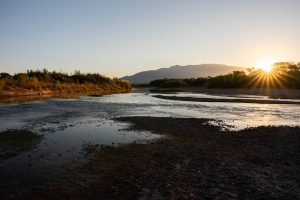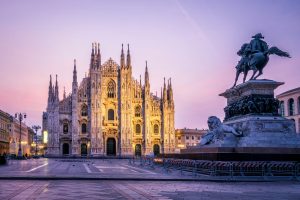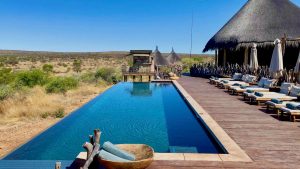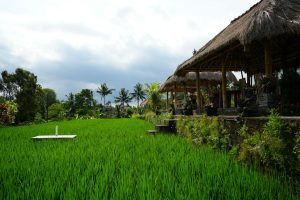
Having been isolated from the mainland for thousands of years, wildlife in the Galapagos Islands has evolved in unique and fascinating ways. These endemic animals continue to inspire visitors today as they did Charles Darwin back in 1835. Giant tortoises, playful sea lions, tiny penguins, blue-footed boobies, and marine iguanas are some of the most captivating and sought-after species.
Most of the animals that we can find in the Galapagos are visible throughout the year. Still, some events only occur at certain times of the year and on some specific islands. If you want to see the albatross on land, it is better to prepare your trip between March and December with an itinerary that includes Española Island. If your interest is in Galapagos penguins, you better embark on an itinerary through the western part of the archipelago.
In this article, you will find a calendar with the different events related to the most picturesque animals in the Galapagos:
January
January is the breeding season for marine iguanas, and it is when we can see males with green and reddish colors on their skin to attract the female of the species. Marine iguanas are distributed throughout the archipelago, but the best place to see them is on Fernandina Island, home to the largest colony of marine iguanas.
During this month, if luck favors us, we can also see sea turtles as they make their yearly pilgrimage to lay their eggs on the beaches of the same island where they were born.
February
February marks the beginning of the flamingo nesting season on Floreana Island. Flamingos gather in groups to perform an elaborate dance and display their bright pink primary feathers as part of their mating ritual. Witnessing this ritual is a truly unforgettable experience.

March
In March, the Galapagos albatross begins to return to Isla Española after several months away. With a wingspan of up to 2.5 meters (8.2 feet), it is the largest seabird in the world. This bird can only be found on Española Island on the eastern end of the archipelago.

April
The first sea turtle hatchlings begin to emerge in April. At night, hundreds of small turtles can be seen crossing the beach. Pacific green sea turtles can be found on the beaches of Isabela and Fernandina islands.

May
In May, birdwatchers can witness the peculiar mating ritual of blue-footed boobies. The male will display his feet in a carefully choreographed dance. The color of its feet is of particular importance when searching for a mate since its pigmentation is an indicator of how well it can feed. One of the best places to observe this dance is North Seymour Island.

June
In June, the dances of the blue-footed boobies on North Seymour Island coincide with the frigate mating season. During this time, the flashy males begin to puff their giant red pouches, stretching from their beaks to their chests.

July
Although it is quite likely to see dolphins in the Galapagos at any time of the year, the water temperature makes them get closer to the Galapagos coast during the summer months. July offers the best opportunity to see whales and dolphins in the Galapagos, especially between the channel that separates the Fernandina and Isabela islands, only accessible through cruises. 24 species of dolphins and whales call the Galapagos Marine Reserve home, including orcas, humpback whales and bottlenose dolphins.

August
August marks the start of the Galapagos hawk’s breeding season. One of the largest birds in the archipelago, this species of falcon can be found on the islands of Española, Santiago, and Fernandina.

September
Although Galapagos penguins inhabit the western islands throughout the year, they are closer to the central islands, such as Bartolomé or Santiago, during this time.

Of the 18 penguin species in the world, Galapagos penguins are the smallest, weighing around two kilograms. It is the only species of penguins that can be found north of the Equator.
October
Breeding of the Galapagos fur seals begins in October and continues until December. It is possible to see groups of this species so unique in the Fernandina and Isabela Islands, but, above all, in Santiago.
 During this month, we also start seeing blue-footed boobies raising their newborn chicks on North Seymour Island.
During this month, we also start seeing blue-footed boobies raising their newborn chicks on North Seymour Island.
November
As the seas begin to calm down and the water temperature rises, we will be able to enjoy excellent visibility when snorkeling or diving. Sealion cubs will be several months old and are at their most playful stage, approaching swimmers to play with them. Some of the best places to snorkel on the islands are Devil’s Crown, Kicker Rock, Punta Espinoza, or Tagus Cove.

December
One of the most exciting natural events occurs between December and March: the hatching of giant tortoises. Weighing up to 250 kg (550 lb.), the Galapagos giant tortoise is the largest living tortoise species in the world. They grow very slowly and often live for more than 100 years.

Carlos Beate is the Commercial Manager at Andando Tours. Andando Tours offers exclusive traveling experiences, specializing in sailing around the Galapagos Islands and overland along the magnificent Avenue of Volcanoes on the Ecuadorian Andes.
If you would like to be a guest blogger on A Luxury Travel Blog in order to raise your profile, please contact us.






